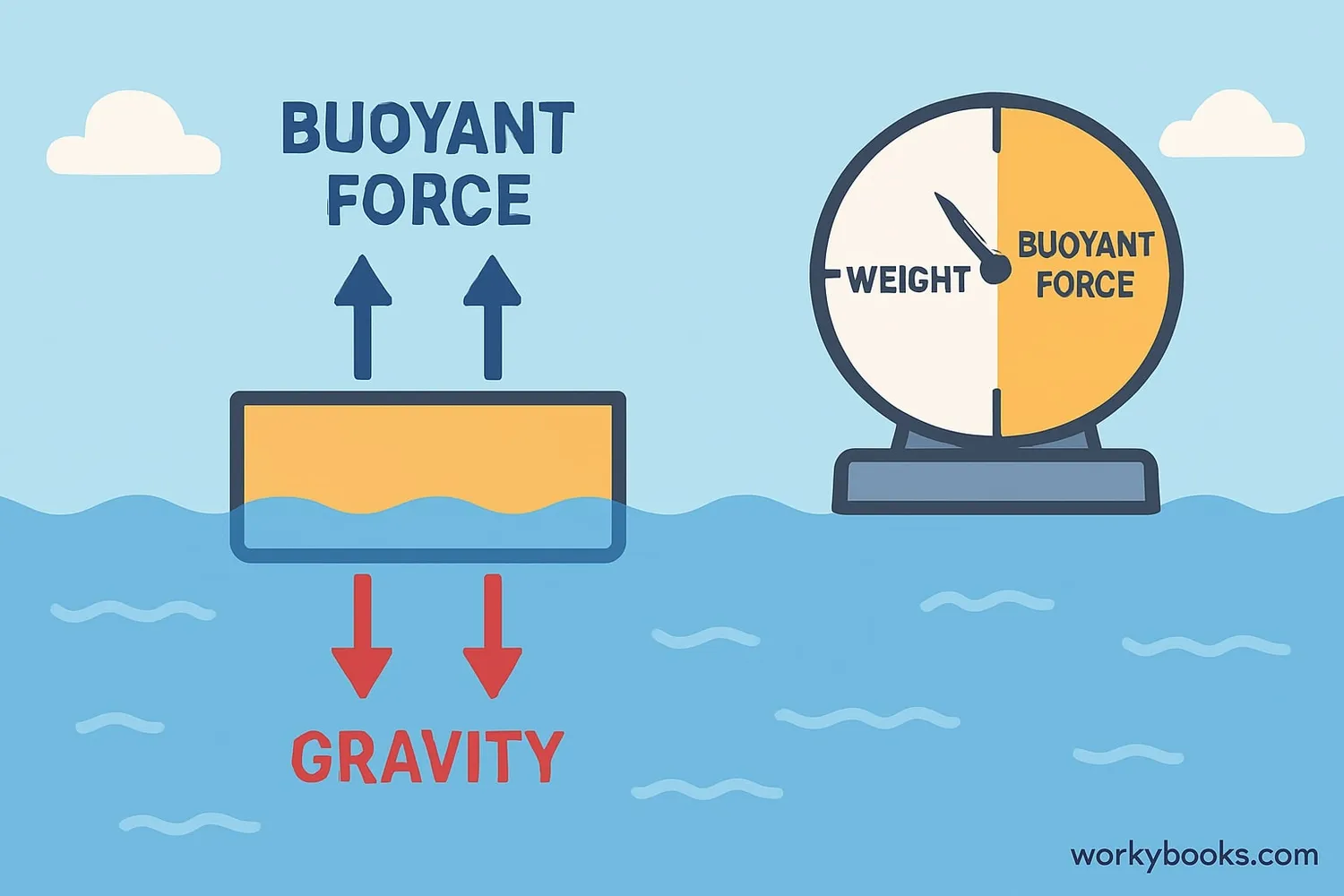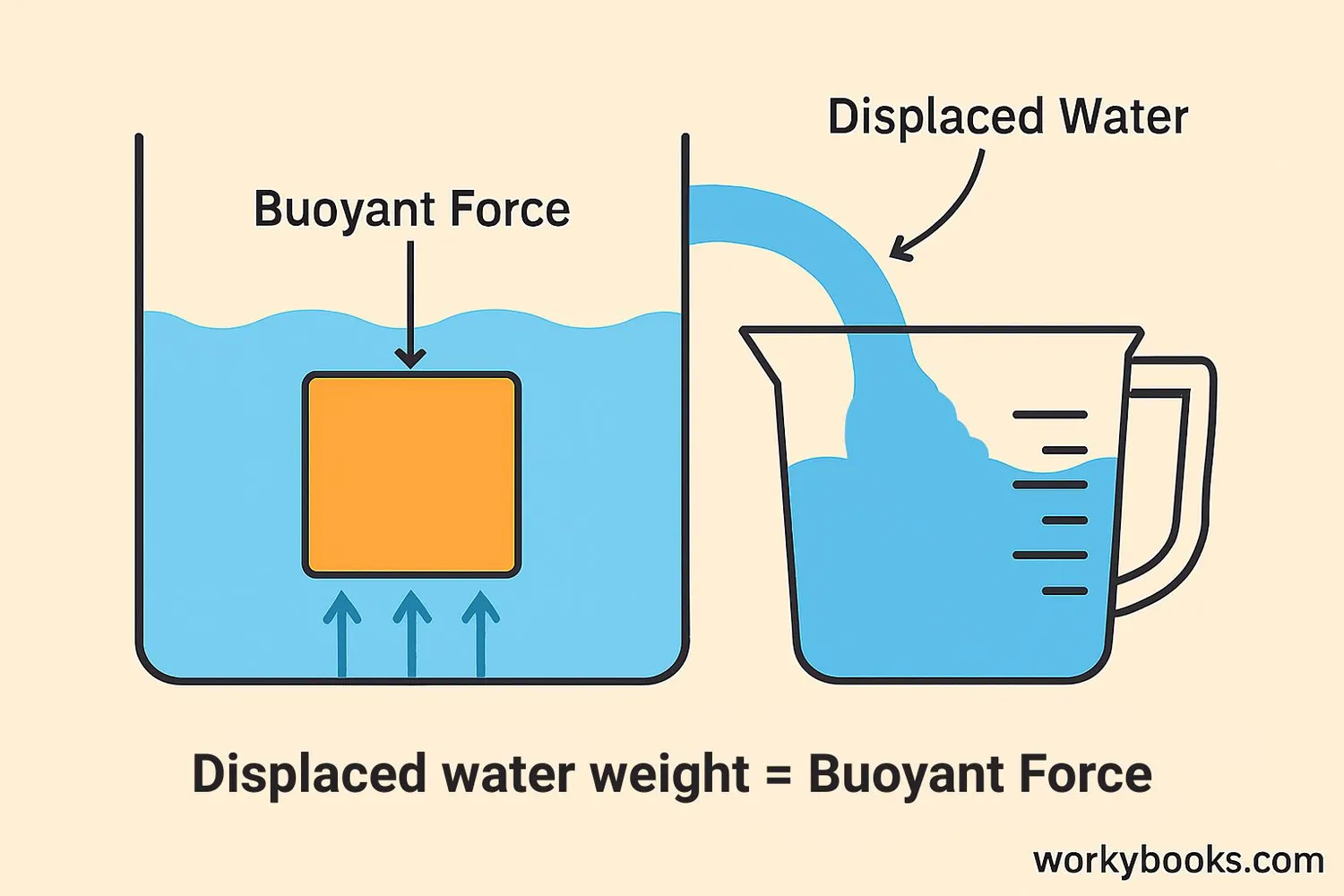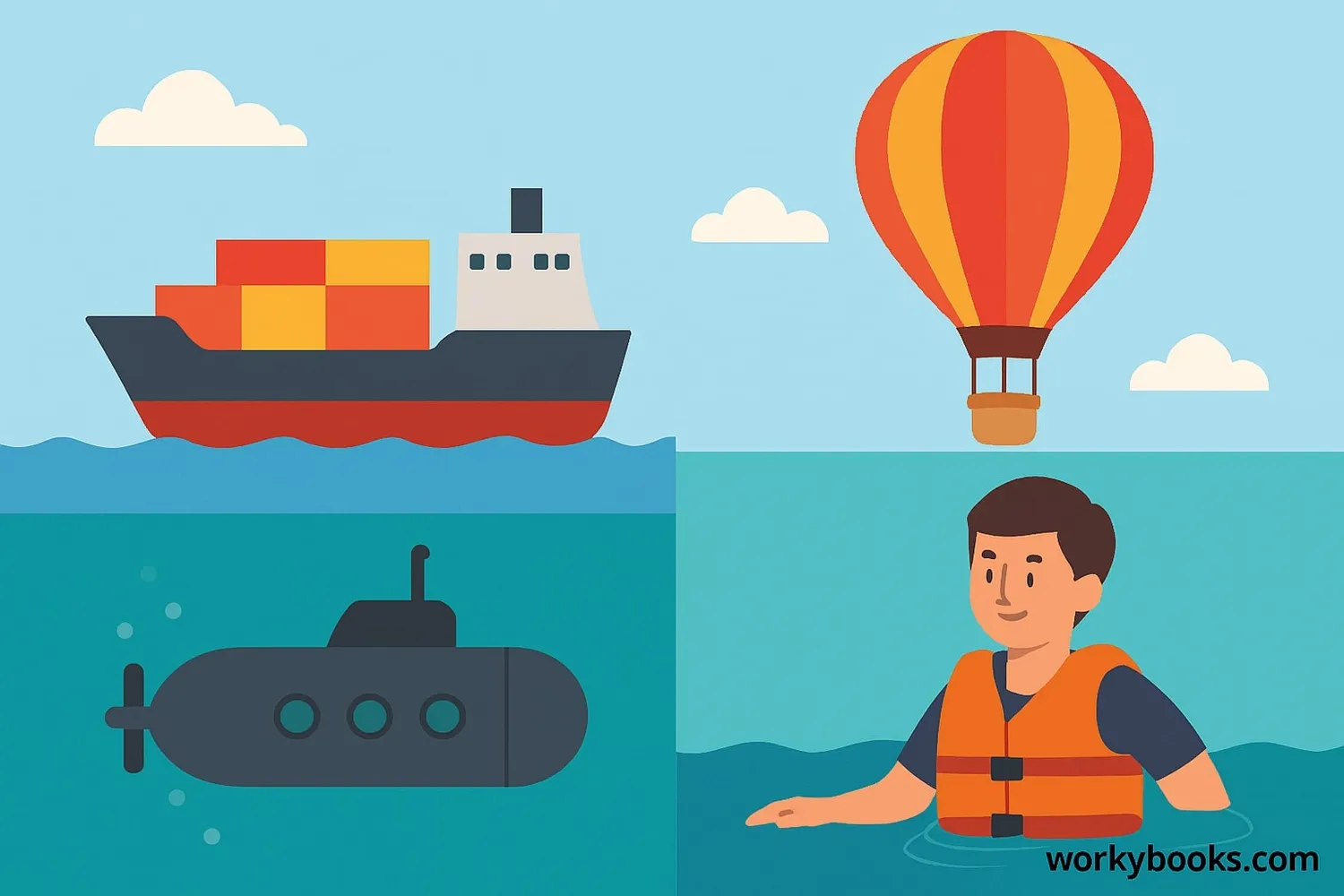Buoyant Force - Definition, Examples, Quiz, FAQ, Trivia
Discover why objects float or sink and how water pushes things upward
What is Buoyant Force?

Buoyant force is the upward push that water and other fluids exert on objects placed in them. This force makes objects feel lighter in water and can even make them float!
Think about when you're in a swimming pool - you feel lighter because the water is pushing you upward. That push is the buoyant force! It's why ships made of heavy steel can float on water, while a small rock sinks to the bottom.
Science Fact!
The buoyant force acts in the opposite direction to gravity. That's why objects feel lighter in water!
How Buoyant Force Works

Buoyant force works through Archimedes' Principle, discovered over 2,000 years ago! This principle states:
"The buoyant force on an object equals the weight of the fluid displaced by the object."
When you place an object in water, it pushes aside (displaces) some water. The water that gets pushed aside has weight, and the buoyant force pushing up on the object equals that weight.
Displacement
Object pushes aside (displaces) fluid when placed in it
Weight Calculation
Calculate weight of displaced fluid
Upward Force
Buoyant force equals weight of displaced fluid
Density Matters
Object floats if less dense than fluid, sinks if more dense
The strength of the buoyant force depends on:
• Volume of the object (how much space it takes up)
• Density of the fluid (how heavy the fluid is)
• Gravity (which pulls everything downward)
Archimedes' Discovery
Legend says Archimedes discovered buoyancy while taking a bath! He noticed water overflowing and ran through the streets shouting "Eureka!" ("I found it!").
Why Buoyant Force is Important

Buoyant force is essential in our everyday lives and in many technologies we use:
Ships & Boats
Enables heavy ships to float by displacing enough water
Swimming & Safety
Life jackets increase volume to help people float
Submarines
Control buoyancy to dive and surface by changing weight
Understanding buoyant force helps us:
• Design ships that can carry heavy cargo
• Create life-saving equipment like life jackets
• Understand why hot air balloons rise in air
• Measure density of objects using water displacement
• Develop submarines that explore the ocean depths
Buoyant force is also important in nature - it helps fish control their depth in water and allows plants to disperse seeds through water.
Density Differences
You float better in saltwater than in freshwater because saltwater is denser, creating more buoyant force!
Buoyant Force Quiz
Test your buoyant force knowledge with this quiz! Answer all 5 questions to see how much you've learned.
Frequently Asked Questions
Here are answers to some common questions about buoyant force:
Fun Buoyant Force Trivia
Discover some amazing facts about buoyant force!
Ancient Knowledge
People have used buoyancy principles for over 8,000 years! Ancient reed boats used buoyant materials to stay afloat long before Archimedes formalized the principle.
Fish Bladders
Many fish have a special organ called a swim bladder. By changing the amount of gas in this bladder, fish can control their buoyancy and hover at different depths!
Dead Sea Floating
The Dead Sea is so salty (almost 10 times saltier than the ocean) that its high density makes people float effortlessly! You can even read a newspaper while floating on your back.
Space Buoyancy
Buoyancy even works in space stations! Astronauts use special tanks to create "neutral buoyancy" that simulates weightlessness for training.


